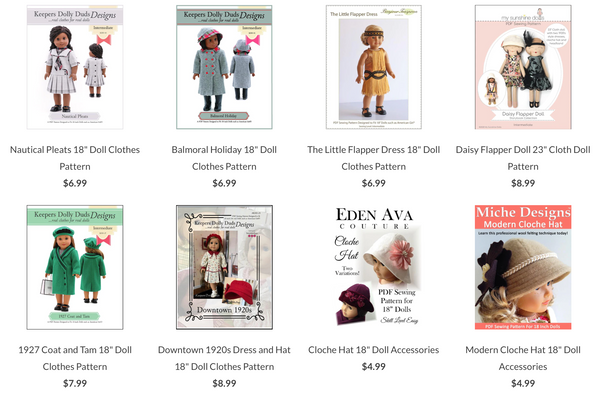 We’ve put together the ultimate style to help you make a historically accurate 1920s look for your doll such as Claudie Wells™ the newest historical character from American Girl®! ]]>
We’ve put together the ultimate style to help you make a historically accurate 1920s look for your doll such as Claudie Wells™ the newest historical character from American Girl®! ]]>
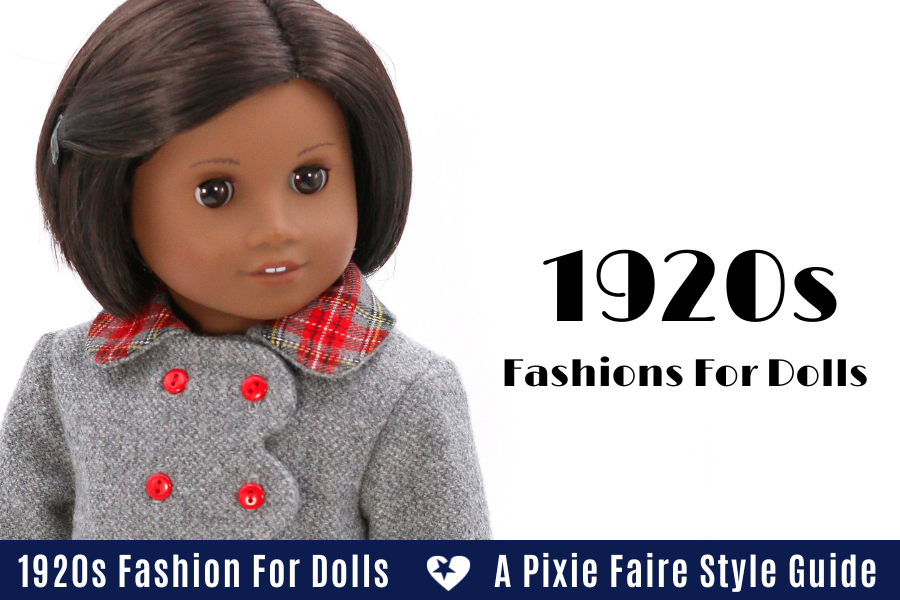
PIXIE FAIRE STYLE GUIDE: 1920s Fashion For Dolls
We’ve put together the ultimate style to help you make a historically accurate 1920s look for your doll such as Claudie Wells™ the newest historical character from American Girl®! The 1920s were a time of relentless joy in the aftermath of the First World War. Exuberant styles like the flapper dress and bob haircuts were all the rage. To make a great 1920s-inspired outfit for your doll you’ll want to understand these five components to this particular fashion era: new developments for children’s clothing, dresses, embellishments, accessories, and flapper girls.
Please be sure to leave a comment at the bottom telling us which pattern you’re most excited to start working on!
NEW DEVELOPMENTS FOR CHILDREN’S CLOTHES
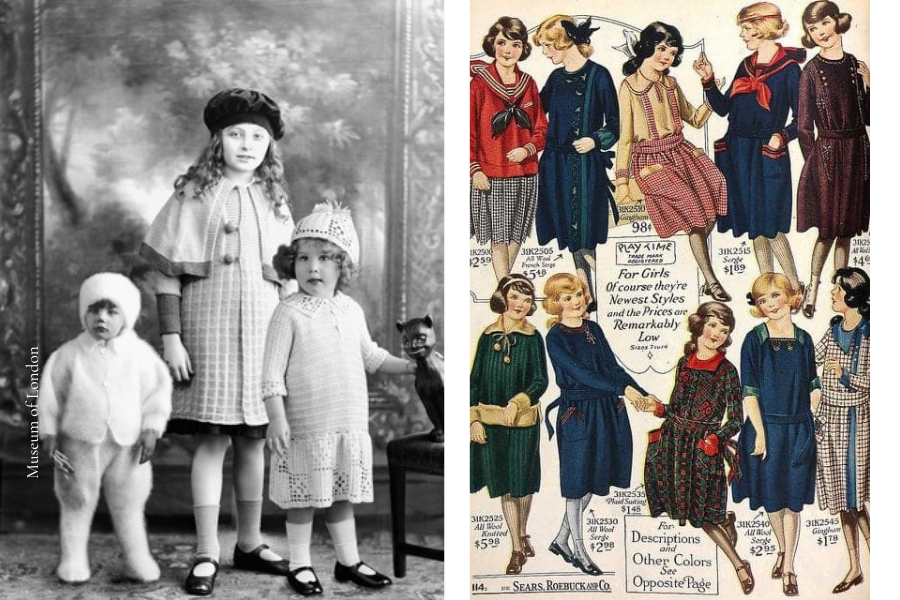
Children’s clothing in the 1920s changed dramatically from the past decades because it shifted focus from ornateness to practicality. The clothes, especially girl’s clothing, began to loosen and feature simple lines that were designed for their needs and comfort. There was also a substantial loss of layers in children’s clothing. Before then there would be several layers of bloomers, stockings, and more, but in the 1920s, and thereafter, there was typically only be one layer of undergarments under children’s clothing. This gave children more freedom to play than ever before.
DRESSES
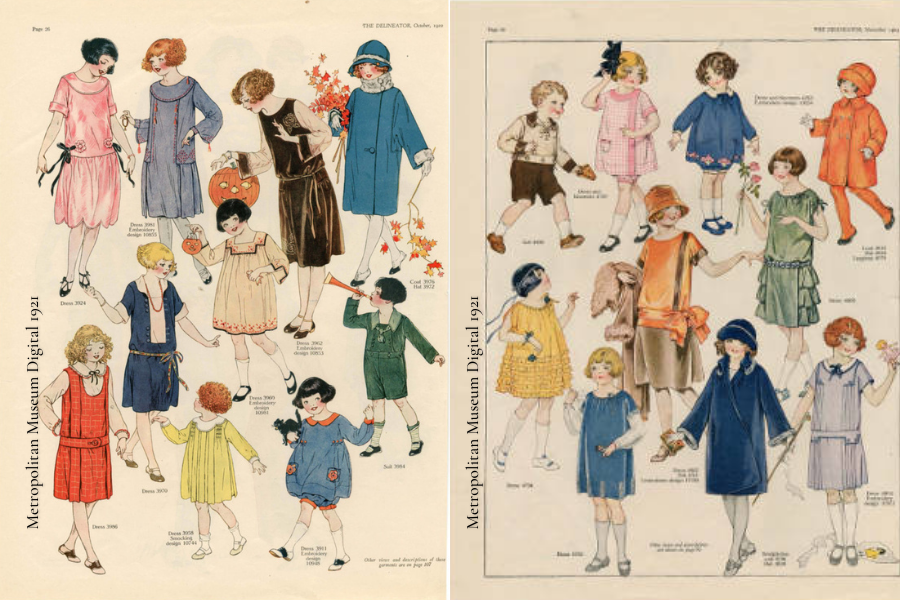
The new popular style for dresses in the 1920s heavily deviated from anything that was previously in fashion. Dresses were shortened for girls and women of all ages. For young girls, dresses fell to the knee or just above. For older girls, teens, and women, dresses fell somewhere between below the knee and midcalf. Dresses featured dropped waists which accentuated their boxy fit. This eliminated the need for corsets and rebelled against the trends of centuries prior. It is an interesting reversal in trends to note, however. In the past (and future) girls’ clothing always followed the trends for women’s clothing, but in this unique case, women’s clothing was heavily inspired by girls’ fashion trends. This is evident through the short and boxy fit of the fashionable dress styles.
EMBELLISHMENTS
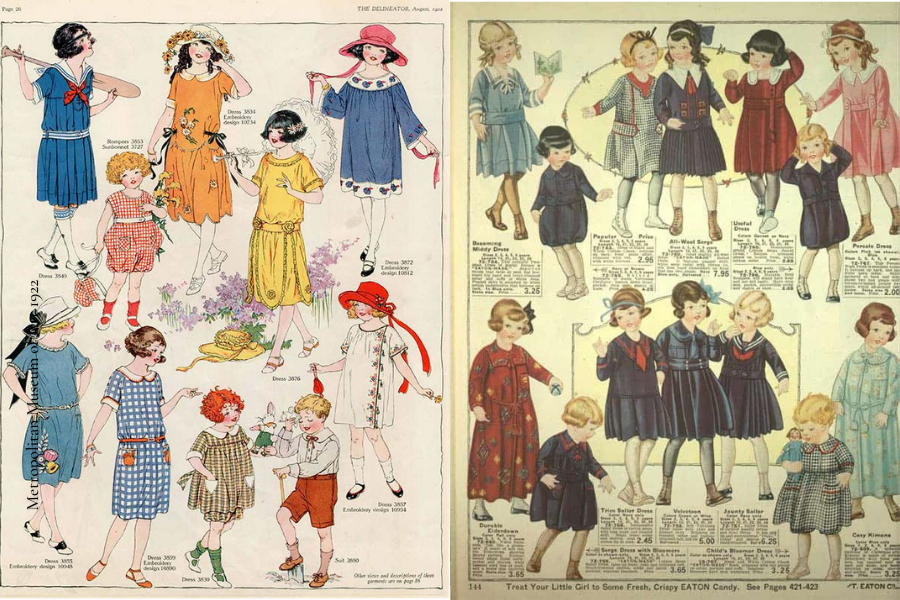
Although children’s clothing was more practical than it had been in the past, girls’ clothing in the 1920s was joyful and full of extravagant embellishments. This is a reflection of the culture during the time period. Some of these embellishments consisted of smocking patterns, embroidery, and bright-patterned fabrics. Girls’ dresses and shirts would often also feature large “Peter Pan”-style collars.
ACCESSORIES
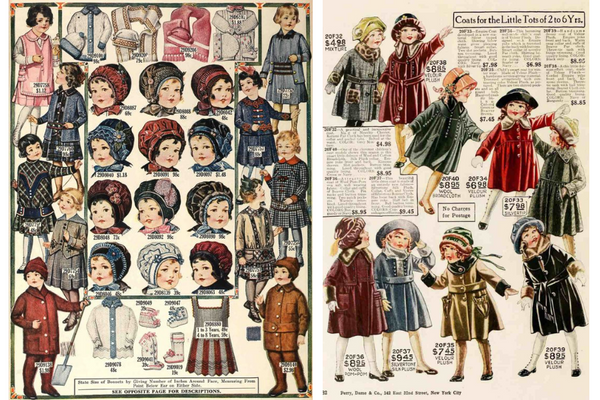
Young girls in the 1920s did not wear many accessories besides hats, shoes, or hair accessories. Hats were popular for all age groups and were most often made of either wool or straw. Straw hats had wide brims and flat tops. They also were accented with ribbons or sashes as trims. The popular wool hat at the time was cloche hats. A cloche hat is shaped like a bell and extends down to the base of the neck and over the ears. The brim is small and frames the face well. Shoes for girls in the 1920s were often made of canvas which was easy to clean and cheap to produce. In the 1920s girls of all age groups wore their hair in short bob haircuts. These hair cuts were often decorated with ribbons or headbands to make them more feminine looking.
FLAPPER GIRLS
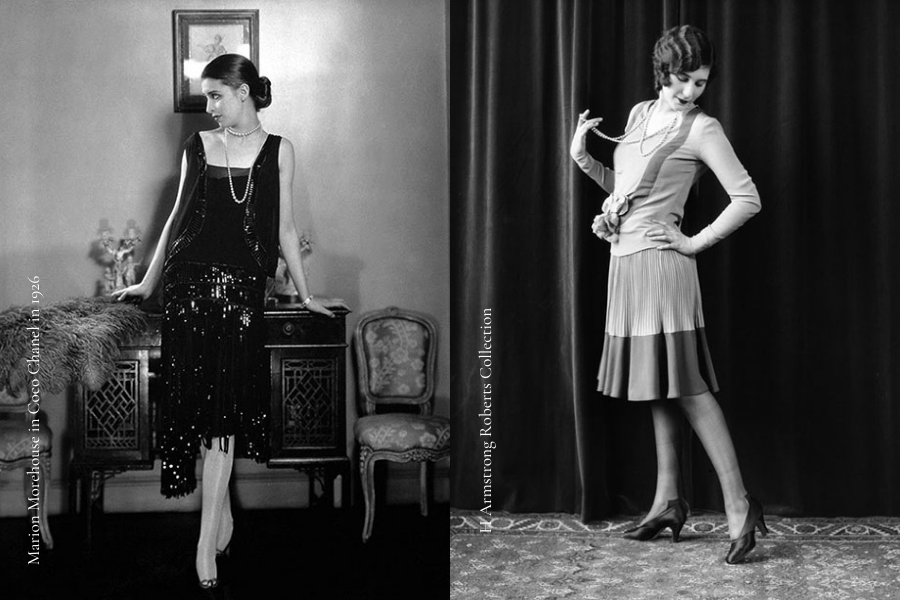
One of the most iconic looks of all of fashion history is that of the flapper girl. Although it was not popular with young girls, it was still an influential look during the time period. The name “flapper” doesn’t have a clear root but describes young women in the 1920s who wore short, drop-waist dresses, bobbed hair, and heavy makeup. They valued fun, had very loose morals, and were nothing like their mothers from the generations before them. They dated one man after another, partied nearly every night, spent money endlessly, and danced until dawn. Nearly any girl in F. Scott Fitzgerald’s novels was considered a flapper girl, as well as his wife Zelda. Zelda heavily influenced the flapper fashion culture.
FABRICS AND PRINTS
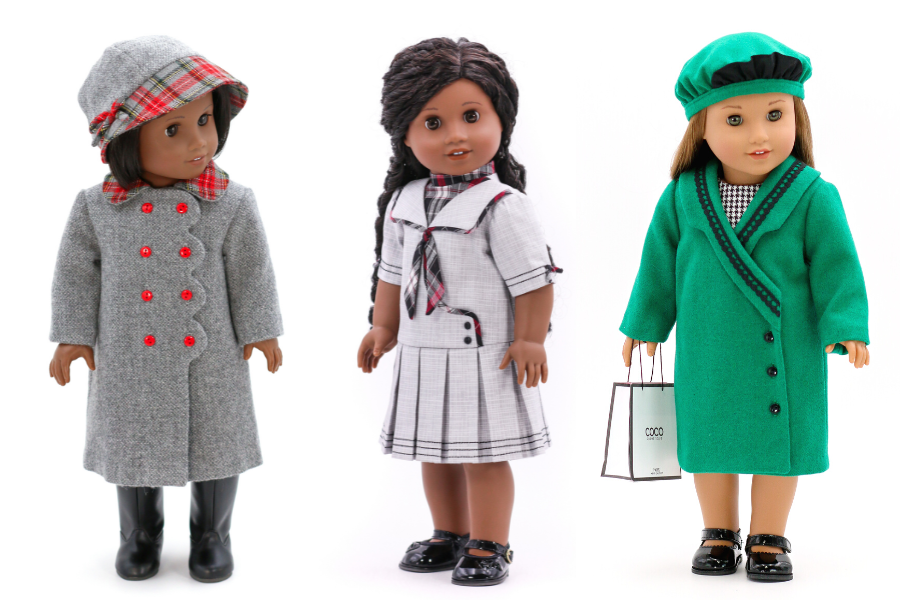
Popular fabrics for children’s clothing in the 1920s were fabrics that did not take much maintenance. These would have been things like cotton, wool, or jersey knit. These textiles were easy to wash and did not require much ironing, which made them popular with the children’s mothers as well! Wealthier children would have been able to wear fabrics like velvet, lace, muslin, or silk, but these were also often reserved for special occasions. Bright and optimistic colors as well as bold prints were popular for the era. Take a look below for our suggested fabric choices:
Lace Fabric from Joann Fabrics
Wool Felt Fabric from Joann Fabrics
Black Velvet Ribbon from Mood Fabrics
Black Velvet Fabric from Mood Fabrics
Black Fringe Trim from Mood Fabrics
larougetdelisle offers a wide variety of 1920s era-inspired patterns, but to start check out these patterns below:
Nautical Pleats Outfit for 18in Dolls
The Little Flapper Dress for 18in Dolls
Balmoral Holiday Set for 18in Dolls
Cloche Hat for Hearts for Hearts Dolls
We’d love to hear from you! Leave a comment, and tell us which pattern you’re most excited to get working on!
Thanks, everyone!
--The larougetdelisle Team :^)
]]>